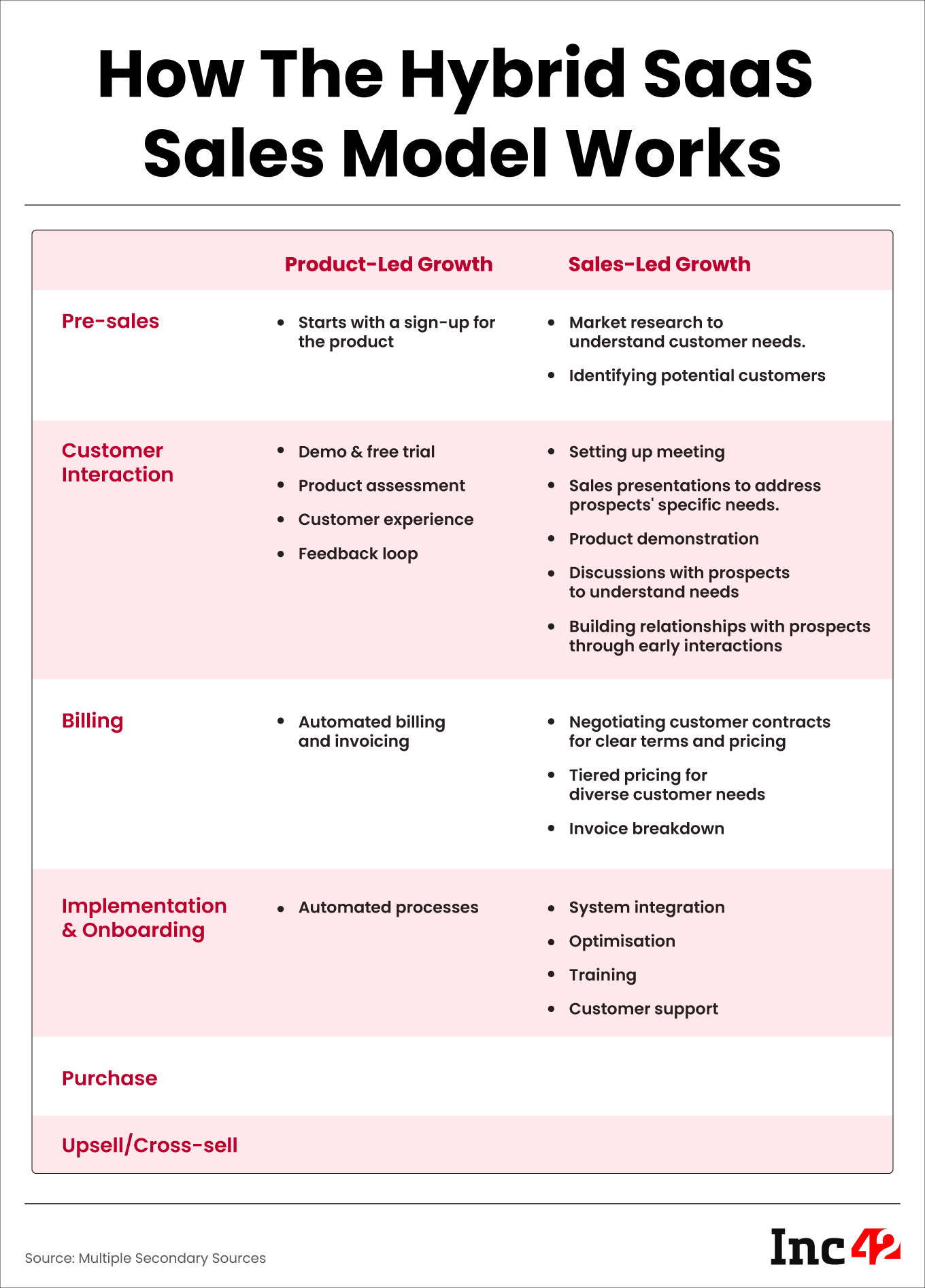Everything You Need To Know About Hybrid SaaS Sales Model

What Is A Hybrid SaaS Sales Model?
Over the years, the world of SaaS sales was ruled by the product-led growth model (PLG), as B2B technology customers sought a hands-off, self-serve experience. This trend grew exponentially during the Covid-19 pandemic, but major shifts happened simultaneously.
As customer requirements evolved and grew more complex, businesses demanded a more inclusive experience on their way to technology transformation. This has led to a hybrid sales model, a combination of traditional sales processes complemented by the tech sophistication of PLG, to ensure better guidance, seamless integration and dedicated support.
In fact, many SaaS companies rely on the sales-led growth (SLG) model as much as PLG to drive business growth. SLG is no longer limited to the transactional drill but thrives on advisory capabilities based on industry knowledge and technology acumen.
PLG, on the other hand, allows customers to explore product value with minimal human intervention before a purchase is made. A McKinsey study reveals this is as crucial as human expertise, given that 30% of B2B customers already use self-serve channels for each stage of the buying journey.
In an era where customer experiences and customer success drive business growth, the hybrid approach works well in a large and diversified SaaS market. But its successful implementation depends on the seamless collaboration among sales, marketing, product and customer support teams who constantly enhance product value and adapt to various market scenarios.

Moving From PLG To Hybrid Sales: Four Things SaaS Companies Need To Consider
The cost factor: Implementing a hybrid sales model has its challenges. To begin with, SaaS companies need to build specialised teams for SLG and PLG models, resulting in additional costs and head counts. One can minimise these expenses by analysing whether their top prospects require this service mix. The sales system should only be reinvented if the projects are worth it.
Customer segmentation: Integrating tools and processes required for hybrid sales can be complex. One should identify and segment customers requiring each service and further track businesses looking to leverage the entire expertise.
Viability tracking: SaaS players should measure the value and viability of the SLG method on a case-to-case basis when dealing with large businesses or enterprises. Bringing in the sales team may unnecessarily complicate matters if the products/services do not call for a complex procedure. A PLG strategy may work better in such cases.
Troubleshooting: Complexity can arise from diverse demands of multiple stakeholders when dealing with enterprise clients. In such cases, a skilled sales representative (part of the SLG model) can be a reliable guide to turn potential obstacles into manageable challenges.
How PLG & SLG Help & Hinder Hybrid SaaS Sales
Both product-led and sales-led growth models have distinct advantages correlating to hybrid SaaS sales. Here is a look at the pros and cons:
Pros
- An effective combination of PLG and SLG can provide access to a vast, addressable market.
- PLG offers a dominant growth engine and a lower CAC as customers can purchase/upgrade products without interacting with sales.
- PLG’s demos, free trials and self-service options attract a larger pool of prospects due to low-touch, excellent UX.
- With the PLG model in place, SaaS companies can scale up fast without the bottlenecks and expenses related to traditional sales.
- SLG helps generate more revenue by exploring niche markets and high-value clients.
- Due to deep ties between customers and sales teams, SLG provides better upselling and cross-selling opportunities.
- SLG enhances customer loyalty through personalised guidance, leading to a deep dive into product value, better business relationships and higher renewal rates.
Cons
- Teams need to be structured differently and must have different go-to-market strategies. However, this should not hamper their cross-functional co-ordination.
- SLG initially incurs huge expenses, while high-value deals may take months to fructify. This may hurt SaaS companies if they are not ready for such investments.
- Handling different goals and objectives has its pitfalls. SLG teams typically target high-value enterprises, while the PLG system caters to smaller customers, which may lead to a rift in purpose.
- SLG may fail to deliver without balancing costs and benefits. To mitigate this risk, SaaS companies must constantly monitor pricing and discounts.
The post Everything You Need To Know About Hybrid SaaS Sales Model appeared first on Inc42 Media.
No comments